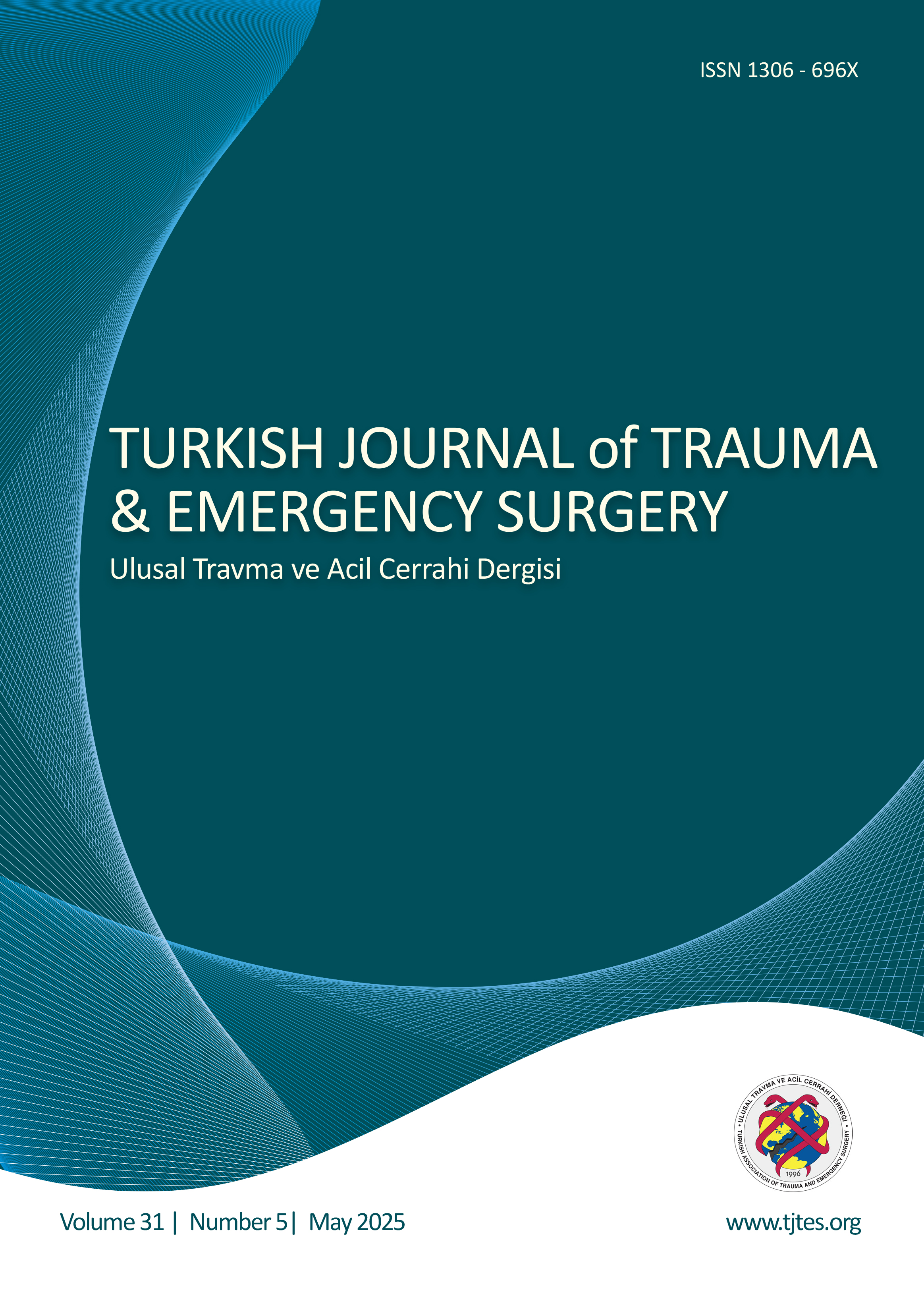Hızlı Arama
Komplike veya non-komplike apandisit? İşte bütün mesele bu
Tolga Dinç1, Ali Sapmaz1, Yasin Erkuş1, Zeynep Yavuz21Ankara Şehir Hastanesi, Genel Cerrahi Kliniği, Ankara2Ankara Üniversitesi Tıp Fakültesi, Biyoistatistik Anabilim Dalı, Ankara
AMAÇ: Akut apandisitler her yaş grubunu ve her iki cinsiyeti de içerisine alan toplumda yaygın görülen bir hastalık olup akut batının en sık sebep-lerinden biridir. Komplike ve non-komplike ayrımının ameliyat öncesinde yapılması önemlidir. Çalışmanın amacı, acil servise akut apandisit ile gelen hastalarda, hastalığının komplike veya non-komplike olduğunu belirlemede kullanılabilecek laboratuvar parametrelerinin saptanmasıdır.
GEREÇ VE YÖNTEM: Çalışmaya, Mayıs 2019Kasım 2020 tarihleri arasında, acil genel cerrahi servisine başvurmuş, apandisit tanısı konulmuş, kadın ve erkek hastalar alındı. Hastalara ait demografik veriler (yaş, cinsiyet, protokol numaraları), tam kan sayımları (DNI [Delta nötrofil indeks], hemoglobin, monosit, nötrofil, eozinofil, bazofil, trombosit, platelet distribution width [PDW], mean platelet volume [MPV], reticulocyte distribu-tion width [RDW]), biyokimyasal parametreleri [amilaz, direk bilirubin, indirek bilirubin, albumin, kalsiyum], laktat dehidrogenaz [LDH]), muayene muayene bilgileri hastane otomasyon sisteminden elde edilip SPSS programı ile kayıt altına alındı. Komplike ve non-komplike olarak iki gruba ayrılan hastaların parametreleri karşılaştırıldı.
BULGULAR: Komplike ve nonkomplike hasta grupları karşılaştırıldığında; beyaz küre, monosit, nötrofil, DNI, total bilirubin ve direkt bilirubin değer-leri açısından istatistiki fark saptanmıştır (p değerleri sırası ile; <0.001, 0.003, <0.001, <0.001ve 0.008dir).
TARTIŞMA: Akut apandisitte, komplike ve non-komplike ayrımını yapmada, laboratuvar parametreleri olarak WBC, monosit, nötrofil, eozinofil, DNI, bilirubin değerleri kullanılabilir.
Complicated or non-complicated appendicitis? That is the question
Tolga Dinç1, Ali Sapmaz1, Yasin Erkuş1, Zeynep Yavuz21Department of General Surgery, Ankara City Hospital, Ankara-Turkey2Department of Biostatistics, Ankara University Faculty of Medicine, Ankara-Turkey
BACKGROUND: Acute appendicitis (AA) is a common disease that includes all age groups and both genders in societies and is one of the most common causes of acute abdomen. It is important to distinguish between complicated and non-complicated appendicitis before surgery. This study aims to determine laboratory parameters that can be used to determine whether the disease is complicated or non-complicated in patients admitted to the emergency department with AA.
METHODS: Female and male patients admitted to the Emergency General Surgery Department between May 2019 and November 2020 and diagnosed with appendicitis were included in the study. Demographic data (age, gender, and protocol numbers), complete blood counts (Delta neutrophil index [DNI], hemoglobin, monocyte, neutrophil, eosinophil, basophil, platelet, platelet distribution width, mean platelet volume, reticulocyte distribution width), biochemical parameters (amylase, direct bilirubin, indirect bilirubin, albumin, calcium, and lactate dehydrogenase), and examination information were obtained from the hospital automation system and recorded via SPSS software. Parameters of patients were divided into two groups as complicated and non-complicated appendicitis groups were compared.
RESULTS: White blood cell (WBC), monocyte, neutrophil, DNI, total bilirubin, and direct bilirubin values were found to be statisti-cally significantly higher in the complicated appendicitis group compared to the non-complicated appendicitis group (p-values; <0.001, 0.003, <0.001, <0.001 and 0.008, respectively).
CONCLUSION: DNI, bilirubin values, WBC, monocyte, neutrophil, and eosinophil can be used as laboratory parameters to distin-guish between complicated and non-complicated AA.
Makale Dili: İngilizce




